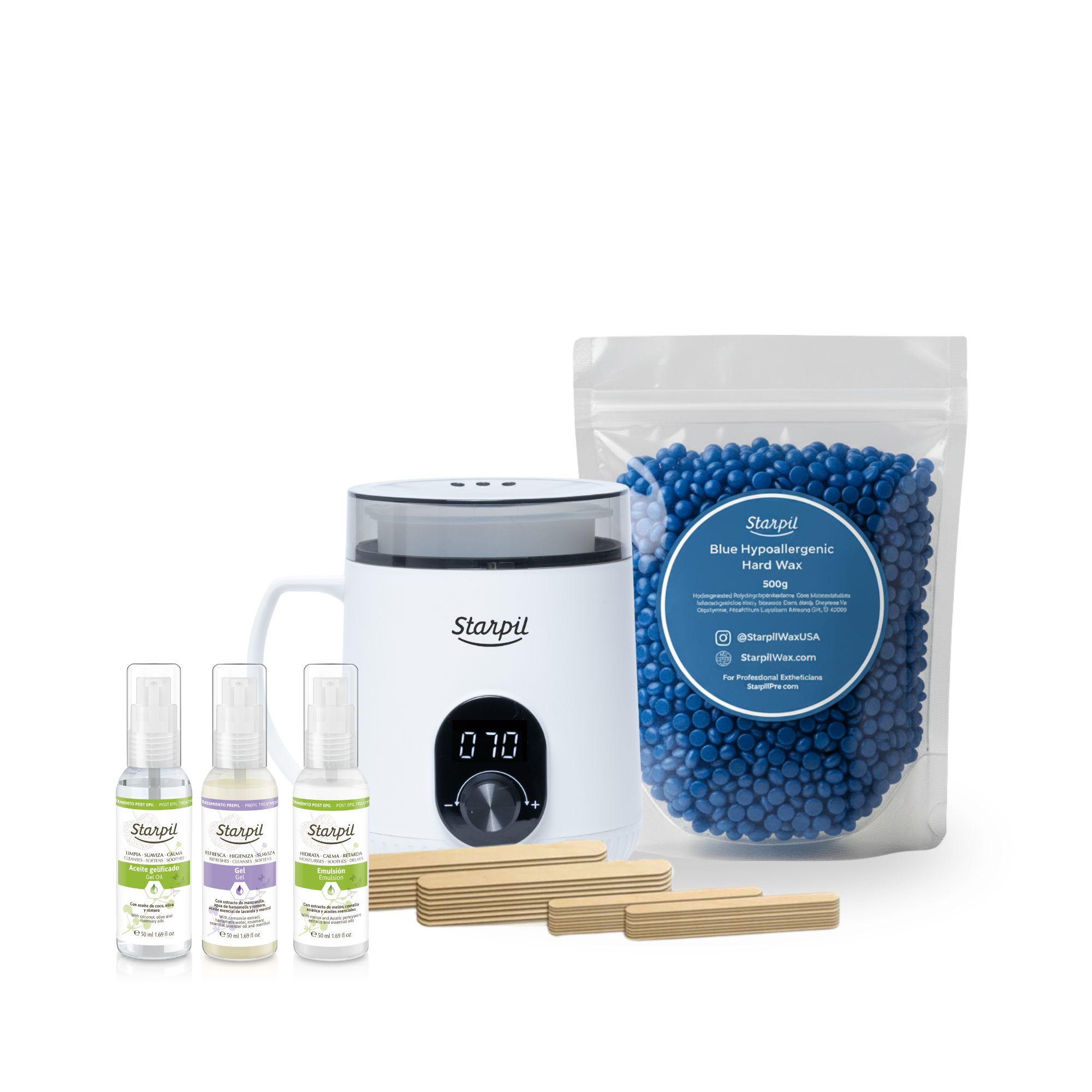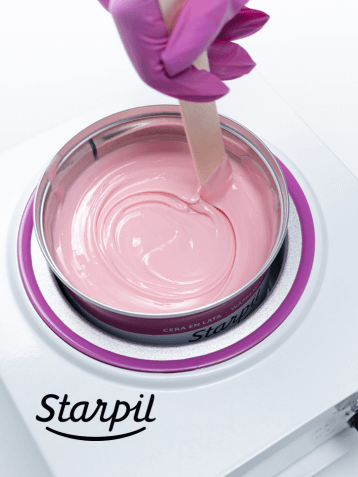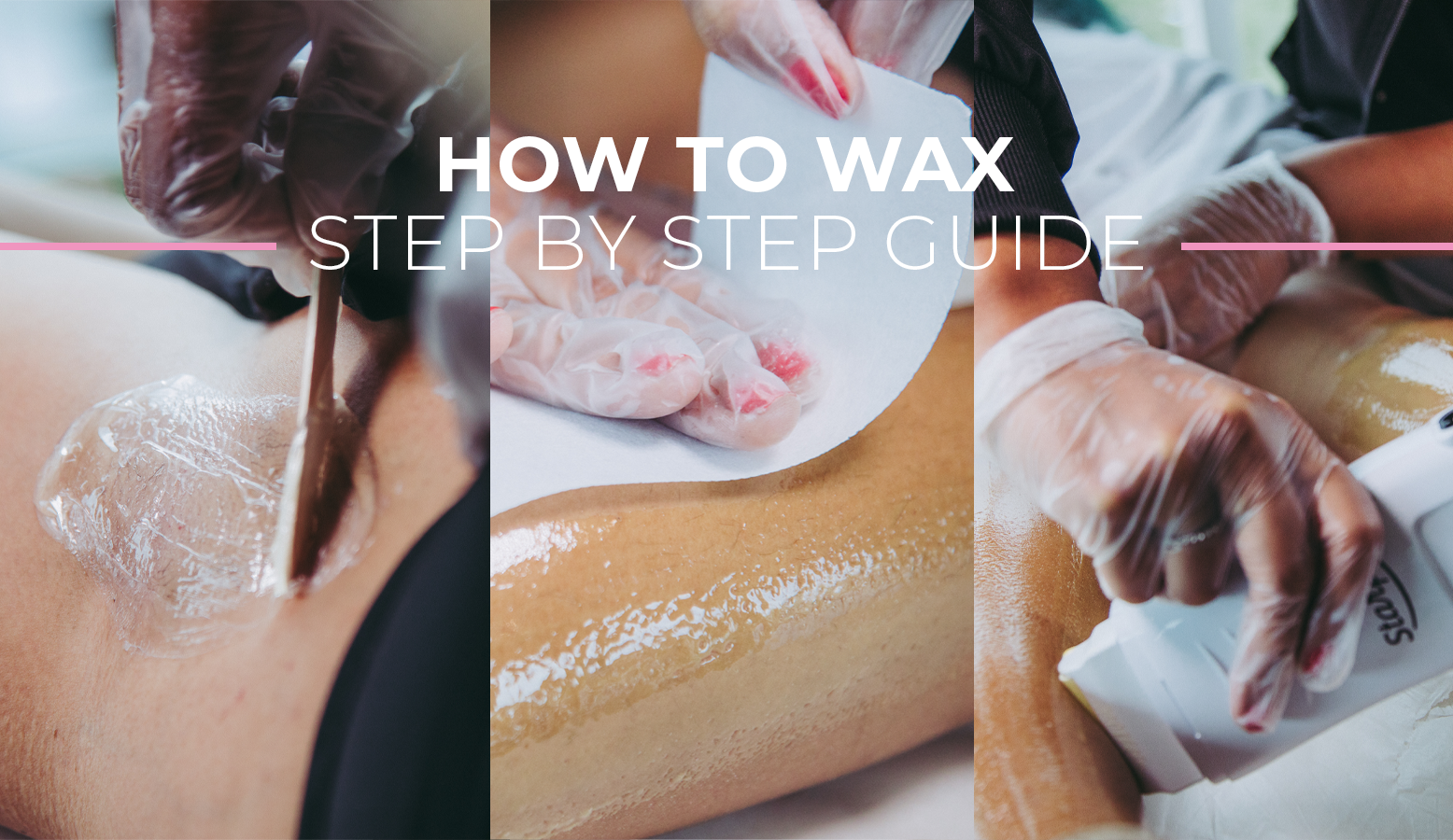What is a Histamine Reaction After Waxing?

A client having any kind of histamine reaction after waxing isn’t something any esthetician wants to see. However, it can happen to anyone - even to clients who try to be the most educated about their skin and possible allergens they might have.
As a professional, it’s part of your job to know how to spot, treat, care for, and help prevent histamine reactions from waxing. It can be tricky, but don’t worry - we’ll be discussing all of that plus the proper protocol to follow if your clients have a histamine allergic reaction on the face or body.
Table of Contents
- What is Histamine?
- What is a Histamine Reaction?
- How Long Does a Histamine Reaction Last?
- How to Handle a Histamine Reaction on the Body
- How to Treat an Allergic Reaction
- How to Prevent a Histamine Reaction
- Final Thoughts
What is Histamine?
Histamine is a compound of the immune and neurological systems and is found in cells throughout the body. Histamines induce swelling and produce a red color on the skin.
When the skin is affected by trauma (in our case, waxing is a superficial trauma), allergies, or infection, histamines boost blood flow to the sensitive area, which creates inflammation in the skin.
Having something be inflamed for a minute or two is no big deal, but a strong histamine reaction after waxing needs to be dealt with as soon as possible.

What is a Histamine Reaction to Waxing?
Histamine reaction symptoms after waxing can look different for everyone. Since waxing (especially for first-timers) can shock the hair follicle, it may cause a histamine reaction. There are several types of histamine reactions. A histamine reaction to waxing could materialize as the following:
- Prolonged redness after waxing
- Hives
- Sneezing (very common for eyebrow and facial waxing)
- Red bumps after waxing
READ: 5 Tips for How to Wax Sensitive Skin
How Long Does a Histamine Reaction Last?
Histamine reaction symptoms like redness, hives, or blotchy red spots after waxing are par for the course when it comes to waxing skin, so a normal reaction to waxing can sometimes be mistaken as a histamine reaction.
However, wait a little bit before thinking that a histamine reaction might be taking place.
Skin can start to soothe as soon as you apply beneficial post-wax care products. But generally, skin sensitivities, spots, or redness after waxing should subside in between 24 to 48 hours.
How to Handle a Histamine Reaction on the Body
If the histamine reaction is particularly strong, recommend anti-histamines like Benadryl or hydrocortisone cream to your clients to soothe and quell the reaction.
If your clients want something more natural, lavender and calendula essential oils contain anti-inflammatory properties that may reduce redness and sensitivity.
We recommend using either Original Post-Wax Lotion for common histamine symptoms after waxing or Starsoft Post-Wax Lotion or Calendula Post-Wax Care Mousse for more sensitive skin types.
These products are specially formulated to speed up skin’s PH level recovery after waxing.
READ MORE: 7 Ways to Prevent and Treat Ingrown Hairs
What’s the Difference Between a Histamine Reaction and an Allergic Reaction?

As mentioned above, common histamine reaction symptoms can be a minor irritation compared to a histamine allergic reaction or a bacterial one. When experiencing a bacterial or allergic reaction to waxing, your client may experience sensitivity, itchiness, hives or welts, and have raised white, puss-filled bumps.
Post-wax acne can be commonplace, especially when the client doesn’t follow proper post-wax care procedures. Still, if the acne is cystic or redness lasts longer than a couple of days, these are anything but run-of-the-mill histamine reaction symptoms.
It’s up to the client if they wish to seek further medical attention or stop waxing altogether.

How to Treat an Allergic Reaction to Waxing
Since there are varying degrees of histamine reactions, the level of discomfort caused by waxing vs. hair removal's benefits is up to the client. If a client has an allergic reaction to eyebrow wax or leg wax, for example, follow treatments like Benadryl and recommend a cold compress.
Apply cooling cucumber and stay away from skincare until the reaction subsides. If the allergic reaction contains blisters, the client should seek medical care.
If you know that a client has a history of intense allergic reactions from hair removal, it wouldn’t be prudent to keep seeing them.
READ MORE: How to Prevent Pimples After Waxing
How to Prevent a Histamine Reaction
When learning how to stop a histamine reaction, start at the beginning. Your awareness of when the skin is particularly dry or sensitive before waxing is essential.
Does the client’s skin turn red quickly when you’re just touching them? Does hair feel brittle? Both dryness and redness factors are indicators that this person has skin sensitivities.
Use the best pre and post-wax care according to their skin type. Start with a post-wax care oil before using a pre-cleansing gel to soften hair and revive dry skin.
Always discuss these things and using the best pre and post-waxing care to help relieve an allergic reaction to waxing with your clients is very important.
READ: Post-Wax Care: Tips & Best Practices
w/ code NO-BUMPS
How to Treat a Histamine Reaction at Home
Starpil waxes are formulated with the highest ingredients to be gentle on the skin and cause minimal redness and irritation.
In addition to using the waxing products with the right ingredients, a good way to better avoid hives or a histamine reaction to waxing before the waxing service itself is through directing the client to practice proper at-home skincare routines, and for you to bolster skin’s support as much as possible when the client is in your care.
Final Thoughts
A skin reaction after waxing is normal! At the end of the day, waxing means pulling a pretty good amount of hair from the root all at once, often multiple times during a service. Skin has every right to protest and protect itself with these responses!
It’s important to share this knowledge with all of your clients, especially those with sensitive skin. If they can understand what’s going on with their skin and practice the best post-wax care, they can trust that they are in good hands and that it wasn’t your method or wax itself that caused the issue.
The next day everything should be back to normal!
Please let us know how Starpil can help you with your post-wax care needs!
FAQs | What is a Histamine Reaction After Waxing?
What is histamine intolerance and how does it affect waxing reactions?
Histamine intolerance occurs when the body has difficulty breaking down histamine, a chemical released during immune responses, resulting in an accumulation that triggers allergy-like symptoms. During waxing, the physical trauma to hair follicles naturally triggers localized histamine release as part of the body's inflammatory response to the procedure. For clients with histamine intolerance, this normal reaction can become amplified and prolonged, resulting in excessive redness, swelling, itching, hives, or even systemic symptoms like headaches or nausea after waxing.
The reaction typically appears more severe than standard post-wax inflammation and may persist for hours or days rather than subsiding within the expected timeframe. Temperature changes during waxing further stimulate histamine release, as does the stress response some clients experience during treatment. Professional estheticians should recognize the difference between histamine intolerance versus standard skin sensitivity.
How can I identify signs of previous histamine intolerance before waxing?
Identifying potential histamine intolerance before waxing requires thorough consultation and observation of specific indicators.
Begin by adding targeted questions to your intake form about chronic allergies, food sensitivities (particularly to fermented foods, aged cheeses, processed meats, and alcohol), digestive issues, migraine headaches, and previous adverse reactions to waxing or other skincare treatments. Those with histamine intolerance often report seemingly unrelated symptoms like frequent headaches, unexplained rashes, flushing after consuming certain foods, chronic nasal congestion, or digestive disturbances.
During visual assessment, look for signs of chronic inflammation such as facial flushing, visible capillaries, or dermatographia (skin writing syndrome, where light pressure on the skin creates raised welts). Those who take antihistamines regularly may be managing undiagnosed histamine intolerance. Pay special attention to those with strong reactions to multiple skincare products, as this may indicate heightened histamine sensitivity rather than specific ingredient allergies.
Consider implementing a patch test protocol 24-48 hours before treatment using your chosen wax formulation on a small area, carefully documenting any reaction that seems disproportionate to the minimal trauma.
What modifications should estheticians make when waxing clients with histamine intolerance?
Professional estheticians should implement several key modifications when waxing clients with suspected or confirmed histamine intolerance to minimize adverse reactions. Begin by scheduling these clients during cooler morning hours when possible, as environmental heat and humidity can exacerbate histamine responses. Allow extra time between client appointments to ensure the treatment room has been thoroughly ventilated and any potential irritants like cleaning product residues have dissipated. Select specialized wax formulations specifically designed for hypersensitive skin, such as Starpil Starsoft Hard Wax, which which provides anti-inflammatory benefits during application.
Use wax at the lowest effective temperature to minimize heat-induced histamine release, testing carefully on your inner wrist before application. Work in smaller sections than usual, removing wax swiftly but with controlled pressure to minimize trauma. Immediately after removing each wax section, apply firm pressure to the area for 5-10 seconds, which helps disrupt the histamine release cascade. Apply soothing post-wax care products immediately after waxing. Document all modifications and client responses in detail, adjusting protocols based on observed reactions.
What ingredients should be avoided in waxing products for histamine-intolerant clients?
When selecting waxing products for histamine-intolerant clients, several ingredient categories should be carefully avoided to prevent triggering or exacerbating reactions. Artificial fragrances top the list of problematic ingredients and common preservatives like parabens can stimulate histamine production in sensitive individuals.
Avoid products containing alcohol as a primary ingredient, as this can both trigger histamine release and compromise skin barrier function, making reactions more likely. Petroleum-derived ingredients like mineral oil and petrolatum can trap heat and irritants against the skin, potentially worsening reactions in histamine-intolerant clients. Sulfates and other strong surfactants sometimes found in pre or post-wax products can disrupt the skin barrier and trigger inflammatory responses. Artificial colorants have also been associated with increased histamine reactivity.
What post-wax care should be recommended for clients with histamine intolerance?
Post-wax care for histamine-intolerant clients requires specialized recommendations that address both immediate reactions and prevent delayed histamine responses. If a client has particularly severe reactions, its recommended to not wax at all.
Immediately after treatment, apply professional-grade post-wax care products. Recommend clients avoid hot showers, baths, saunas, steam rooms, and vigorous exercise for at least 48 hours post-treatment (longer than the standard 24-hour recommendation), as heat and increased circulation can trigger delayed histamine reactions.
Suggest applying cold compresses intermittently for the first 24 hours, 15 minutes on and 15 minutes off, particularly if any reaction begins to develop. Provide specific product recommendations for gentle, fragrance-free cleansers to support skin barrier recovery without triggering additional reactions.
Advise clients to wear loose, breathable cotton clothing for at least two days following treatment to minimize friction and heat retention. Recommend oral antihistamine supplements like quercetin or vitamin C if approved by their healthcare provider. Follow up 24-48 hours after the appointment to see how your client is doing and adjust future treatment if needed.
JOIN THE #STARPILFAM
- To get The Waxopolitan in your inbox, subscribe here for all the fun!
- Get all the Starpil hook-ups with Starpil Esthie Bucks for rewards on your favorite waxing products.
- Join other professional #starpilfam members in The World of Waxing, our Facebook Group. (Have your license ready).
- Follow us on Instagram @starpilwaxUSA for all of the up-to-the-minute waxing trends, Starpil news, and earn free Esthie Bucks.
- Call us at +1 305 907-0756 or text us at Text: (786) 315-9470 from 9:30 AM - 5:30 PM EST.
- Or email us at info@starpilwax.com and put PAM REQUEST in the subject line or contact us here.












